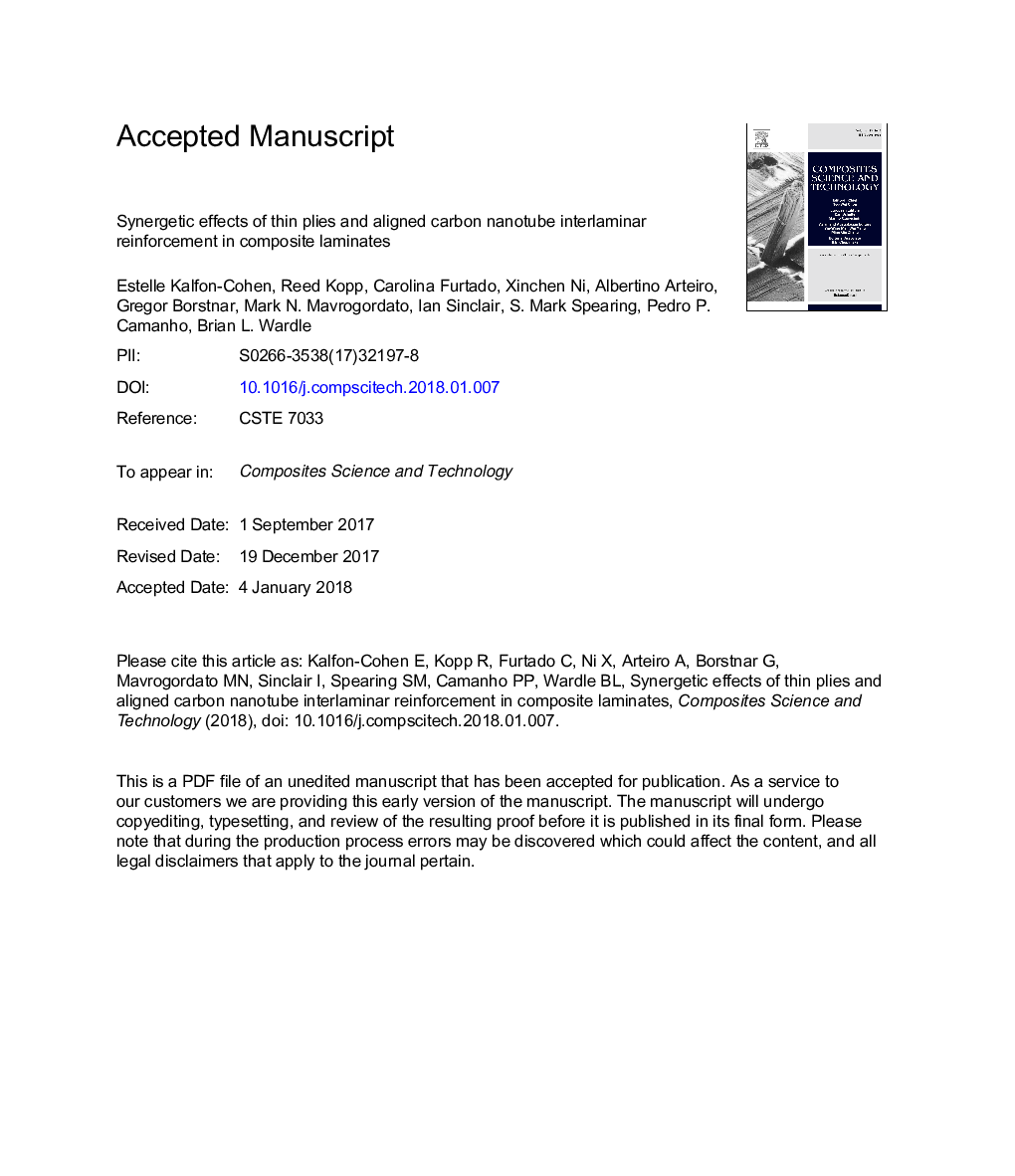| Article ID | Journal | Published Year | Pages | File Type |
|---|---|---|---|---|
| 10226563 | Composites Science and Technology | 2018 | 38 Pages |
Abstract
Thin-ply carbon fiber laminates have exhibited superior mechanical properties, including higher initiation and ultimate strength, when compared to standard thickness plies and enable greater flexibility in laminate design. However, the increased ply count in thin-ply laminates also increases the number of ply-ply interfaces, thereby increasing the number of relatively weak and delamination-prone interlaminar regions. In this study, we report the first experimental realization of aligned carbon nanotube interlaminar reinforcement of thin-ply unidirectional prepreg-based carbon fiber laminates, in a hierarchical architecture termed 'nanostitching'. We synthesize a baseline effective standard thickness laminate using multiple thin-plies of the same orientation to create a ply block, and we find an â¼15% improvement in the interlaminar shear strength via short beam shear (SBS) testing for thin-ply nanostitched samples when compared to the baseline. This demonstrates a synergetic strength effect of nanostitching (â¼5% increase) and thin-ply lamination (â¼10% increase). Synchrotron-based computed tomography of post mortem SBS specimens suggests a different damage trajectory and mode of damage accumulation in nanostitched thin-ply laminates, notably the complete suppression of delaminations in the nanostitched region. Finite element predictions of damage progression highlight the complementary nature of positive thin-ply and nanostitching effects that are consistent with an â¼15% improvement in Modes I and II interlaminar fracture toughness due to the aligned carbon nanotubes at the thin-ply interfaces.
Related Topics
Physical Sciences and Engineering
Engineering
Engineering (General)
Authors
Estelle Kalfon-Cohen, Reed Kopp, Carolina Furtado, Xinchen Ni, Albertino Arteiro, Gregor Borstnar, Mark N. Mavrogordato, Ian Sinclair, S. Mark Spearing, Pedro P. Camanho, Brian L. Wardle,
